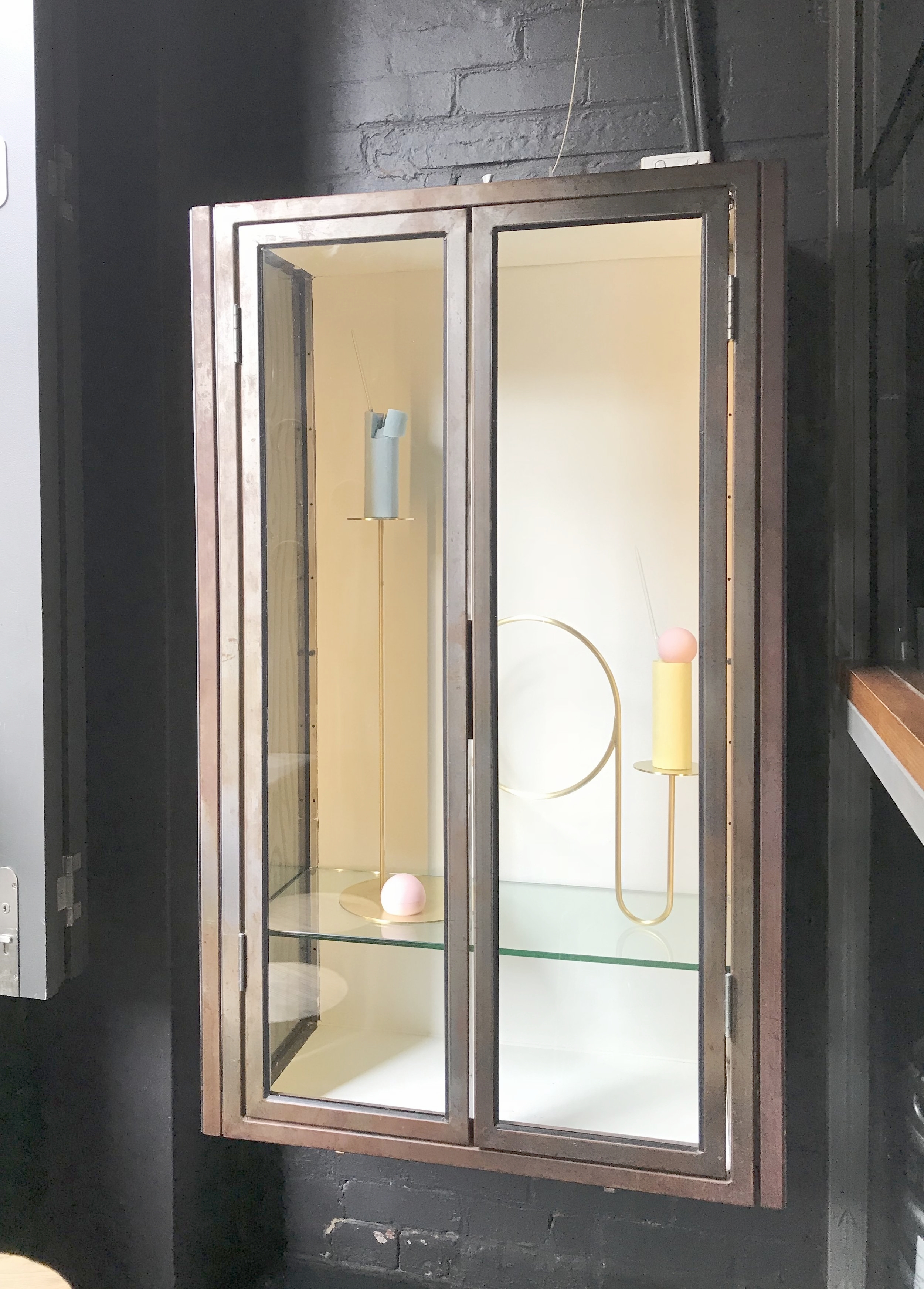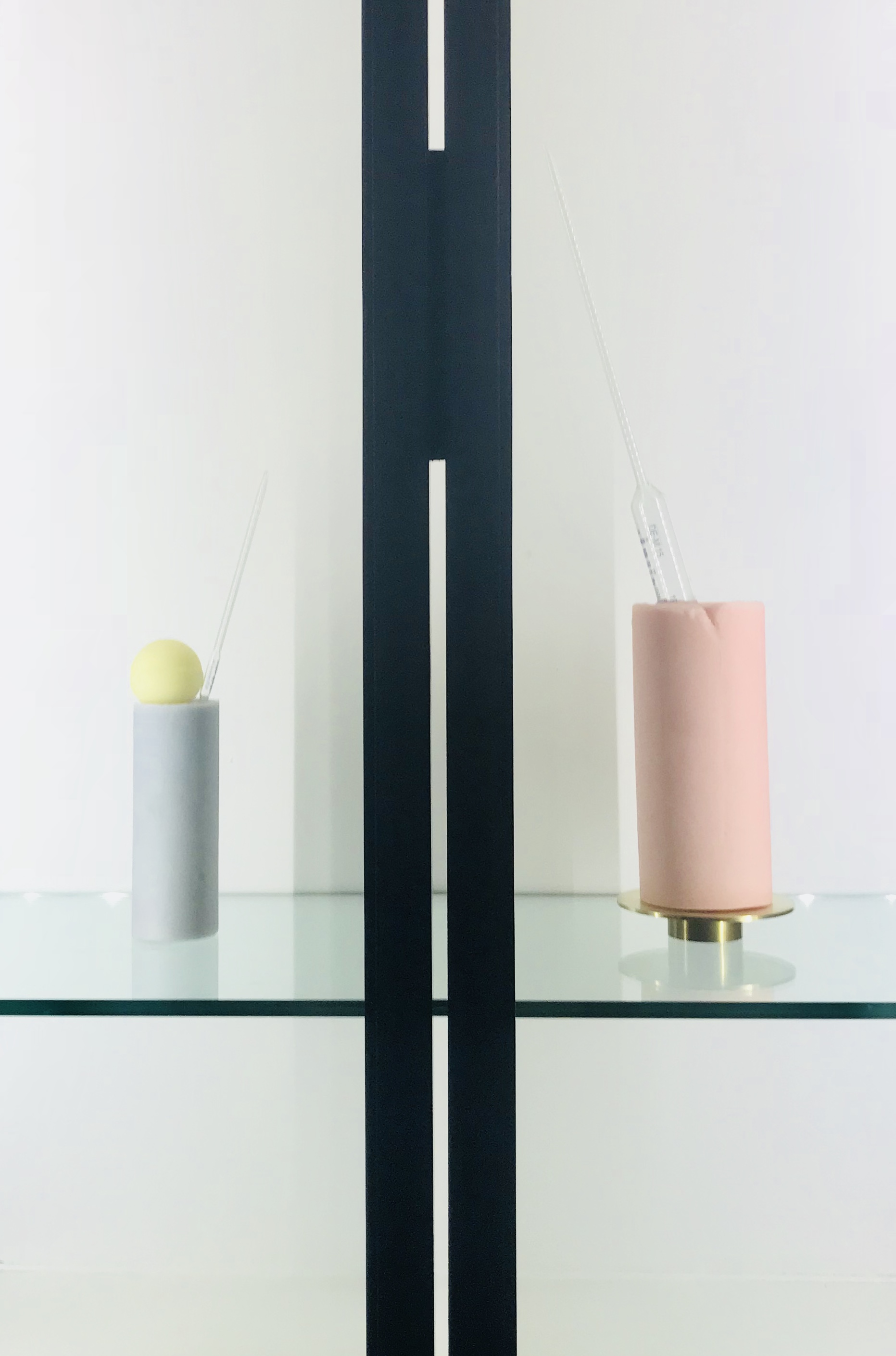



Loop Project Space and Bar, March 2018
Lilith Vitrified is an extension of a project first exhibited in November 2017. The original project - The House of Lilith - was a sculptural site response in which the artist installed a series of lipstick and glass objects in an abandoned office boardroom. Lipstick is a material of adornment most strongly associated with notions of femininity, and the selection of the boardroom for the installation was a deliberate exercise in disrupting context. The room - with its wood panelling, brass detailing and commanding table - was chosen for its gendered optics displaying tropes of a traditionally masculine, capitalist aesthetic. The title of the work referenced the mythological first wife of Adam who refused to submit to him sexually. As a result, she was cast out of the Garden and declared a demon. The Lilith archetype has come to signify the provocative and dangerous feminine, a fearsome challenger of patriarchy. In the installation the lipstick and glass objects investigated dark and potent notions of feminine sexuality and were sat atop brass daises whose design was based on Wiccan symbology. In taking over the space, they transgressed the traditional function of the boardroom and transformed it into a temple of a different kind.
In this exhibition for Loop the installation has been removed from its original context, dissected and isolated within glass vitrines, reducing what was once whole to a series of disjointed and discrete museum objects. Whereby the original installation enacted a certain agency in its intervention of space, here it has been stripped of that agency and reduced to a series of artefacts encased within glass; beautiful but dead.
To vitrify means to turn into glass, or to freeze in order to preserve against aging or deterioration. The device of enshrining the female subject in glass for this very purpose has been used in folklore, most notably in fairy tales such as Sleeping Beauty and Snow White. A young princess is lain in stasis in a glass coffin in order to safeguard her youth, beauty and purity until she is brought back to life by the kiss of a prince. During this time she exists as a flawless, passive object of desire to be observed and admired, immune to the ravages of time. Contained within a display case, she is completely without agency until activated by a male subject.
In contemporary culture we observe the female subject frozen into youth and rendered inert through the proliferation of beauty industry advertising imagery as well as through the use of cosmetic intervention that literally paralyses the flesh. Physical features are brutally scrutinised and modified as separate part-objects, reducing the subject to a corporeal assemblage. The unrelenting examination and ruthless vivisection strips the subject of agency, reducing her to a collection of discrete objects of desire and pleasure. In Lilith Vitrified the artist seeks to explore the dissection and objectification of the human female subject through the treatment of the sculptural object. By removing the artwork from its original context and transferring it to its current one the artist examines how forms of vitrification affect perceptions and experiences of autonomy and agency.